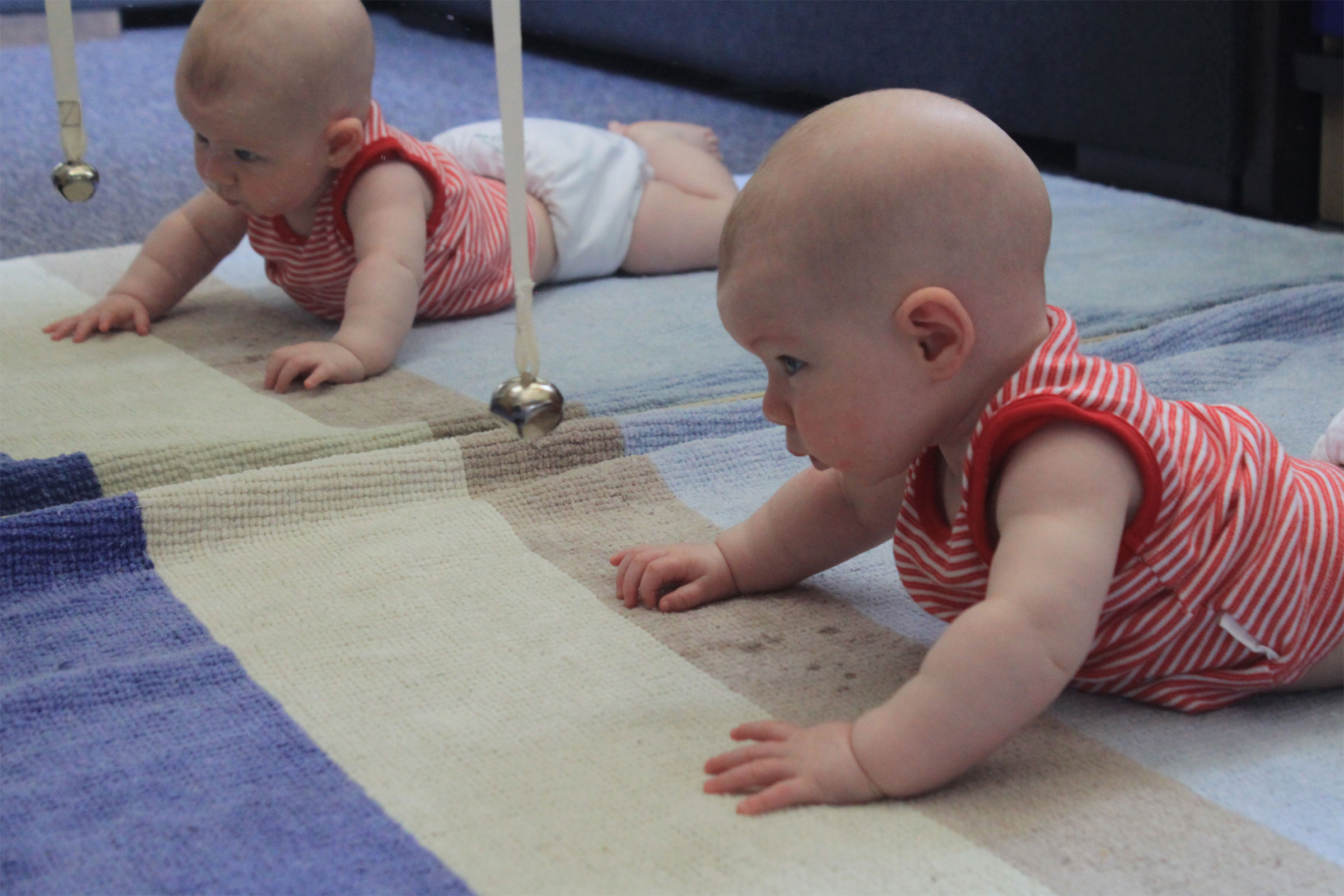Learning and movement are inseparable in Montessori education. From birth all the way to adulthood, from home environment to a bigger world, movement is involved. The nervous system plays a vital role in the development of movement. Three areas are involved: brain, sense organs and muscles.
A prepared environment with clear designated areas is important for adaptation and order. Infants need consistency so that they feel the sense of belonging in the culture they are born into. There should be a place for sleeping, for eating, for changing/toileting, and for movement.
Unlike newborns in the animal kingdom, a human infant needs more or less a full year to walk independently. The ability to walk requires motor maturation supported by the brain. At birth a newborn’s movement is immature; position is supine therefore appropriate mobiles are introduced. It is important that infants are not placed in containers such as cribs. By allowing them to move freely, they gain experiences from slithering, crawling, cruising, and eventually walking independently.
As infants gain more strength with both fine and gross motor developing, the arms will extend and will bat a mobile. Handheld toys and rattles can be offered to grasp, explore with their mouths, and hold to transfer from one hand to another. The sound rattles make engages infants and help with the refinement of the auditory sense. Infants get sensorial information from moving and they are absorbing how the environment works.
There is no need to push infants to walk before they are ready by putting them in walkers. Adult’s attitude matters in supporting the infant’s movement needs. Staying calm as they learn to walk, run, climb or ride a bike assures their feeling of “I can do it by myself!”
Infants need to see the natural environment. Bringing them closer to a window gives opportunities to see nature: falling leaves, birds, shapes of trees and the branches against the bright outdoor light. The contrast of dark and light help supports the child’s developing eyesight. Nature-based materials are necessary for children to experience the real world. Being outside and close to nature allows them to inhale fresh air, watch butterflies, birds and other gifts of nature that help support the development of their muscles, and stimulate the nerve cells growth in the brain.
Comfortable clothing must also be used as they develop voluntary movement, coordination, and balance. By showing them how to put on and take off their clothing through collaboration, they not only gain independence or know how to do things by themselves, but they also build confidence in what they can do.
Lastly, the child needs a prepared adult who loves, understands movement development, role models proper behaviour, and supports the rapid changes taking place in the first three years of life. Observation of the child, the child having opportunities to observe others and nature, order, consistency, healthy nutrition, sufficient sleep, and more importantly the freedom to move within a prepared environment will help meet the movement needs of the growing infant.
Nancy Kodera, AMI 0–3 Trainer
